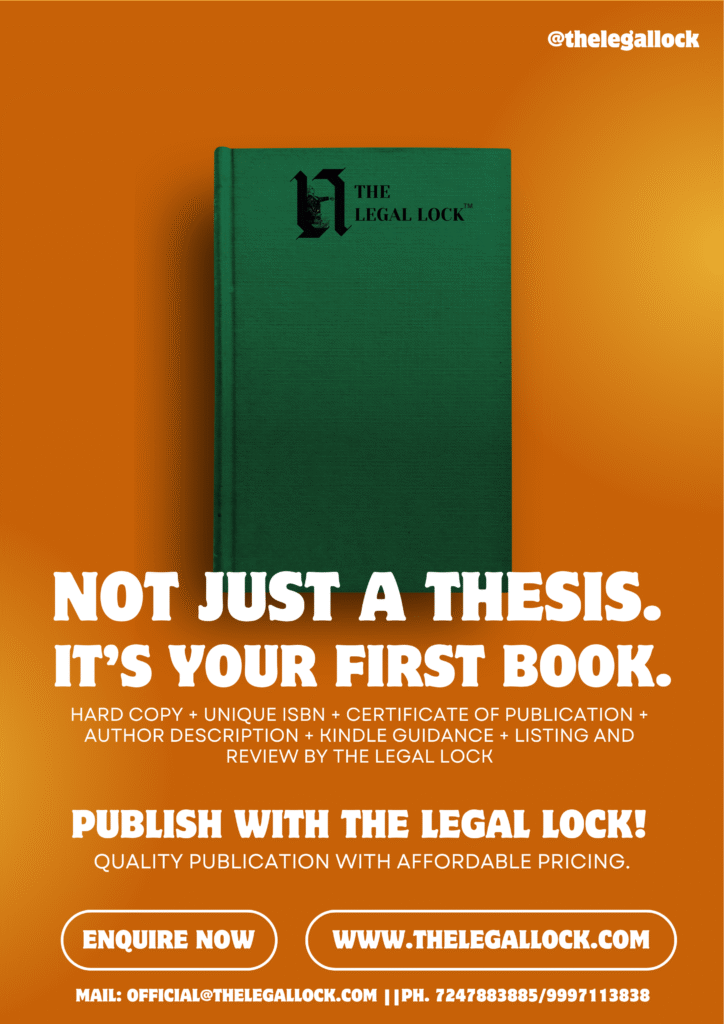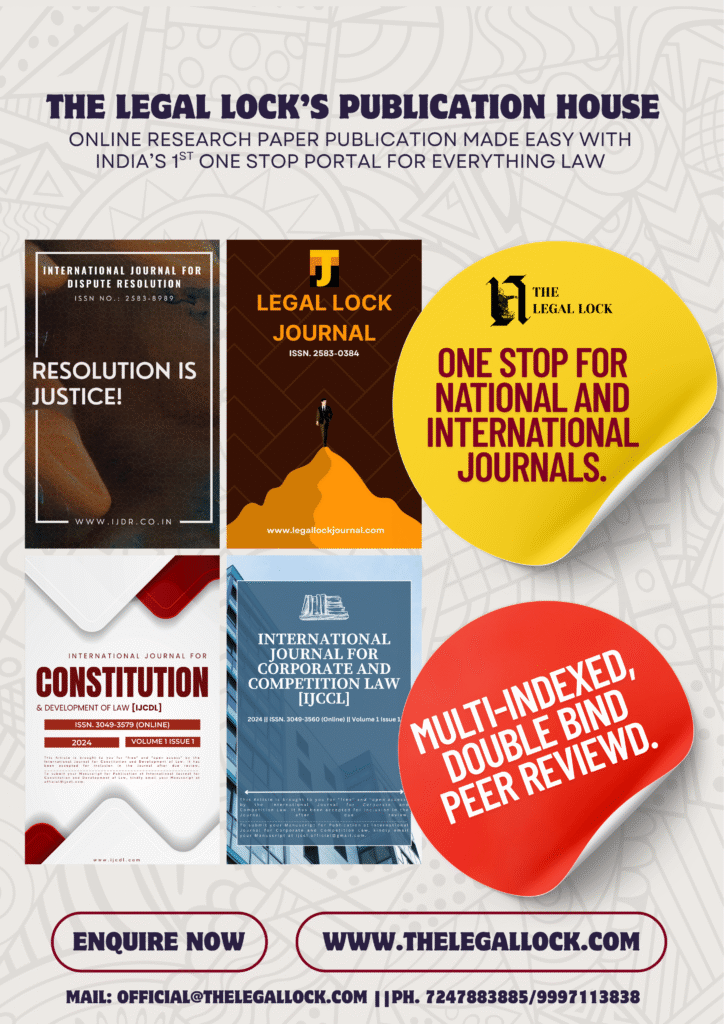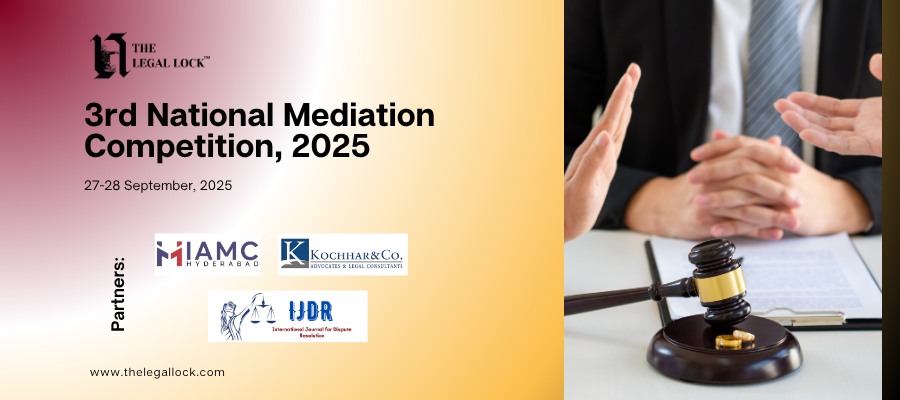Amendment of the Indian Constitution: Article 368 and Its Judicial Interpretation

The constitution of India is dynamic and evolutionary, reflecting the aspirations and needs of its citizens for change. It is a living document that requires a mechanism to accommodate political, social, and economic changes. Article 368 of the Constitution of India defines the procedure for its amendment through which parliament accordingly makes alterations to preserve the essence of constitutionalism. However, this power of amendment is not unqualified; it is circumscribed by various interpretations, especially by the judiciary over the years, which has now created a framework surrounding it.
The amendment powers of Article 3681are unique as they try to balance the rigidity and flexibility that any vital subject must have to maintain stable and adaptable governance structures. Unlike common law, constitutional amendments require special procedures that vary depending on the actual nature of the amendment. While a simple majority may modify some provisions, others require a special majority or even ratification by at least half of the states. The felt need for such a procedure ensures that random changes to the Constitution’s basic features will not be allowed.
Constitutional Framework of Article 368
Changing the Constitution of India is carried out under Article 368. It states that it is changeable according to the requirements of society but shall never safeguard its essential principles. It provides three types of changes, each procedural, which differ in their requirements according to the degree of intensity of the proposed change. These include: (i) changes requiring the simple majority of the members present and voting in both houses of Parliament; (ii) extraordinary majority-required changes; (iii) those requiring both a special majority and ratification affixed by at least half of state legislatures. Through this classification, the amendments affecting the composition of the federal structure and fundamental aspects of governance are subjected to severe scrutiny before being promulgated.
The great majority of provisions found within the first class require simple majority approval. Such provisions typically apply to parliamentary procedures, citizenship, and the formation of new states. Because these amendments do not affect fundamental structural change in governance, they can be passed through direct legislative procedure. Most constitutional amendments would fall under the following category requiring a special majority, i.e., the majority of the members in each house and two-thirds of the members present and voting at a particular time. Among other typical areas of concern, these amendments affect fundamental rights, directive principles of state policy, and the judiciary’s powers. The third and most stringent category consists of changes that, in addition to a special majority in Parliament, call for ratification by at least half of the states. Such amendments usually underline extremely sensitive issues that affect the federal structure.
The Constitution gave the Parliament primacy to amend it under Article 368. It was thought that Parliament could amend any provision of the Constitution, including the fundamental rights enshrined in it. However, with time, the power given to Parliament under Article 368 has been fettered since judicial scrutiny attempted to prevent misuse. The development in the interpretation of the Constitution eventually led to the conclusion that Parliament may amend the Constitution. Still, it may not change its basic structure, which includes essentials such as democracy, federalism, and independence of the judiciary. Such restrictions confirm the dynamic character of the Constitution while protecting it from arbitrary changes capable of devaluing its central values.
The amendment is a regulated process, reinforcing the supremacy of the Constitution. The various changes in article 368 allow flexible adjustments to accommodate the country’s national or social demands. However, procedural safeguards ensure that amendments cannot be used to undermine the constitutional fabric. This structure of amendments prevents any unilateral change in the critical aspects of governance by any actor. All this is done to keep the amendments as a tool of legal evolution from the political considerations of the day, thereby cementing the democratic and constitutional values of India.
Judicial Evolution of Article 368
Striking epochs have critically shaped the developing course of constitutional interpretation in India in the arena of judgments defining the extent to which Parliament would be empowered to alter the Constitution under Article 368. Such judgments delineated the balance between legislative supremacy and constitutional sovereignty about fundamental rights.
1. Shankari Prasad v. Union of India (1951)
This case represents the first judicial inquiry into the issue of the Parliament’s power to change with the help of fundamental rights under Article 368. The conflict arose when the law of the First Amendment, 1951, was contested, especially in the context of property rights, as violating fundamental rights. The petitioners contended that any constitutional amendment affecting fundamental rights should have the status of “law” within Article 13 (2), meaning that the State shall not make any laws infringing on the basic rights.
The Supreme Court affirmed the amendment’s constitutionality, holding that a constitutional amendment passed under Article 368 is not “law” in Article 13 and, therefore, is immune from judicial review. It allowed the Parliament’s unfettered authority to amend any part of the Constitution, including the fundamental rights. This ruling, therefore, carved a path for a broad
interpretation of Parliament’s power to amend, allowing for far-reaching constitutional changes without any judicial scrutiny.2
2. Golaknath v. State of Punjab (1967)
In this scenario, the Supreme Court of the land reviewed its earlier posture and limited the power of Parliament to amend fundamental rights. It came into being due to litigation arising from the land reform laws arguing that such laws violated fundamental rights. The petitioners contended that Parliament could not alter fundamental rights without a new constitution promulgation procedure.
The Supreme Court held that the fundamental rights were sacrosanct, beyond the power of Parliament to change. He had that Article 368 provided only a procedure for amendment and did not bestow any substantive power to alter the Constitution. Thus, Parliament could neither abridge nor abrogate fundamental rights by amendment. The court suggested that a new Constituent Assembly would be convened if fundamental rights were to be amended.
This decision curtailed the amending power of Parliament to an extent and sparked controversies in the political and legal arenas over the Constitution’s rigidity. The most important effect of the decision was a complete turnaround of Shankari Prasad’s case, affirming the importance of safeguarding fundamental rights from legislative overtaking.3
3. Kesavananda Bharati v. State of Kerala (1973)
In India, this is one of the most significant constitutional judgments, which on this day gave birth to the doctrine of basic structure. The issue arose when a religious institution challenged the laws of land reforms, laying claim to the violation of fundamental rights therein. The question posed in front of the Supreme Court was whether the power of Parliament to amend the Constitution was untrammelled.
In a momentous decision of the slender majority of 7: 6, the Supreme Court found that although Parliament can amend the Constitution, it cannot alter the basic structure. The court also listed essential attributes such as democracy, secularism, federalism, separation of powers, and judicial review in the basic structure of the Constitution. The judgment has now reached the delicate balance between legislative supremacy and constitutional sovereignty, ensuring that certain basic tenets could never be amended even by constitutional amendment.
With this decision, in part, the Golaknath verdict was nullified, restoring the powers to amend the fundamental rights of the Parliament. However, these amendments should be consistent with the basic structure of the Constitution. This doctrine has now enabled stubborn resistance to the arbitrary introduction of constitutional amendments and reinforced the supremacy of constitutional principles over ephemeral political interests.4
4. Minerva Mills v. Union of India (1980)
This case again strengthened the concept of the doctrine of basic structure. It put to test the validity of the 42nd amendment to the Constitution, which attempted to curb the power of judicial review and widen the ambit of power to change in Parliament. Inter alia, such provisions declared that no amendment to this Constitution would be questioned in any court and that the directive principles of state policy shall prevail over fundamental rights.
The Supreme Court struck down these provisions, thereby ruling that judicial review is an integral part of the basic structure of the Constitution. The Parliament shall not be able to exercise its power of amendment to destroy or abridge the basic features such as democracy and separation of powers, he reiterated. There has to be a balance between fundamental rights and directive principles; none of them could claim absolute superiority over the other quality.
The judgment revealed that the parliamentary power of amendment under Article 368 is not unlimited, and any amendment that seeks to change the Constitution’s basic features shall be unconstitutional. This case has been a landmark in ensuring the dynamics of the Constitution while upholding its fundamental values.5
5. I.R. Coelho v. State of Tamil Nadu (2007)
The fundamental structure doctrine was extended by this case, which also defined the parameters of judicial editing of laws inserted in the ninth schedule of the Constitution. The ninth schedule was initially set up to protect land reform laws from being overturned by the judiciary. Over time, quite a few laws that otherwise martyred fundamental rights came to be placed under this schedule to save them from court scrutiny.
The Court ruled that laws placed in the ninth schedule could potentially be subjected to modification by a court of law on the grounds of violation of fundamental rights forming part of the basic structure. In the Court’s opinion, Parliament was not entitled to bypass constitutional limitations invoking the ninth schedule, so any law violating basic constitutional structure would be struck down.
This judgment further strengthened the judiciary’s position as the constitutional supremacy guardian, ensuring that legislative actions remain within constitutional confines. It reiterated that the ninth schedule could not serve as a blanket protection for laws violating fundamental rights and principles of basic structure.6
Challenges and Future Perspectives
(A) Political Misuse: While Article 368 provides checks and balances, amendments were sometimes made on political grounds rather than with bona fide constitutional considerations. The 42nd Amendment of 1976, in particular, was aimed at restricting the power of judicial review.
(B) Judicial Overreach: Some argue that by interpreting the doctrine of basic structure, the judiciary has overstepped its boundaries, curtailing Parliament’s power to amend the Constitution.
(C) Need for Clearer Guidelines: While landmark judgments have been crafted to flesh out the basic structure, ambiguity continues; thus, more precise definitions of the contours may shed light.
(D) Balancing federalism: The limited involvement of state governments in the constitutional amendment stresses the centralization of power; thus, increased state participation will strengthen cooperative federalism.
Although not exhaustive, Article 368 serves as a bedrock of constitutional amendability while safeguarding certain fundamental concepts. Time and again, the courts have fulfilled the role of ensuring that excesses, if any, of Parliament in amending the Constitution do not violate some of its fundamental guiding principles. The interactive involvement of Parliament and Judiciary in Article 368, in special reference to the amending PowerPoints, is essential to the durability of the Indian Constitutional Framework. Looking into the future, while changes must reflect the needs of modern times, the amendment process will remain one such dynamic mechanism to confront death-defying hurdles while ensuring the sustenance of primary constitutional values.
The continuing interplay of parliamentary sovereignty against the winds of judicial scrutiny defines Indian democracy. The doctrine of the basic structure has prevailed, providing stability, but the discussion about its scope and applicability continues. Henceforth, whatever amendments are suggested to the Constitution should serve to promote the general interest of society while guaranteeing that the soul of the Constitution remains intact. This constant evolution reminds me of the “living” character of Supreme Law in India, without which it would hold no meaning in a transferring socio-political setting.
1INDIA CONST. art, 368
2Shankari Prasad Singh Deo v. Union of India, 1951 SCC 966
3 Golak Nath v. State of Punjab, (1967) 2 SCR 762
4 Kesavananda Bharati v. State of Kerala, (1973) 4 SCC 225
5 Minerva Mills Ltd. v. Union of India, (1980) 2 SCC 591
6I.R. Coelho v. State of T.N., (2007) 2 SCC 1








